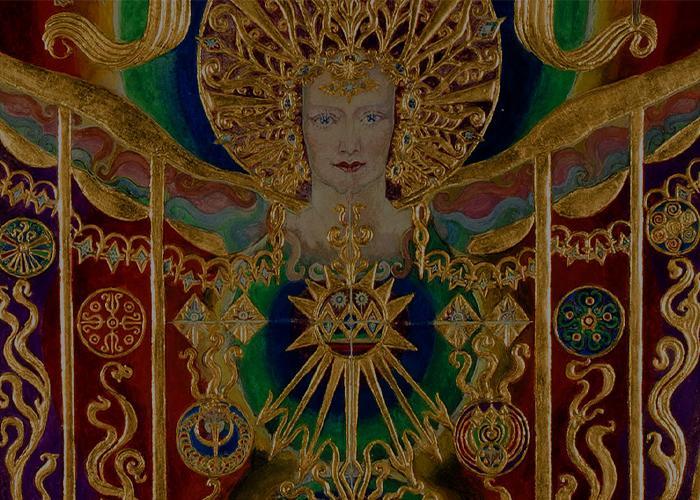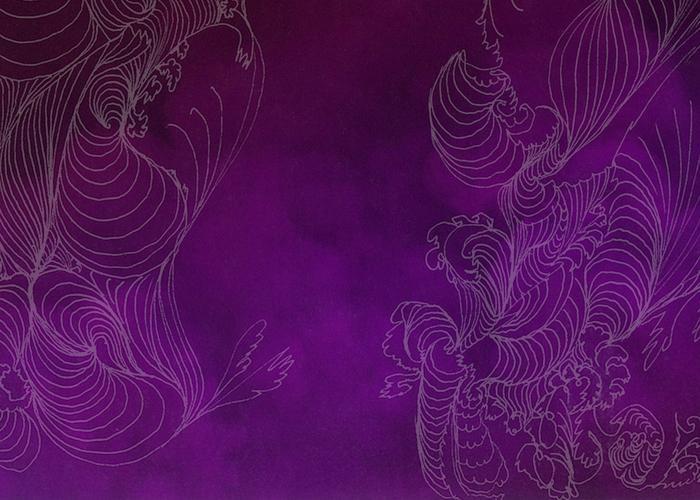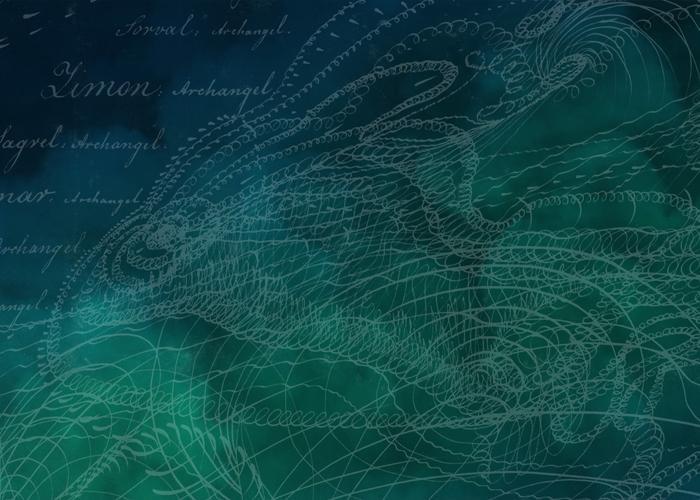What happens to us after we die? Where do we go and what do we do? These questions have likely lingered in your mind more than once as a student at The College of Psychic Studies. And we are certainly not the only ones to ponder them, as cultures throughout history have grappled with these same profound mysteries. As a result, we have some fascinating ancient literature, including the Ancient Egyptian Book of the Dead, the Tibetan Book of the Dead (Bardo Thodol), the Orphic Hymns of Ancient Greece, and much more. These literary relics offer various interpretations of the journey of the soul in the afterlife. They are quite different, or at least, call on culturally unique symbolism and references. However, they do share a common denominator. They each describe a figure, deity or being that assists or oversees the dying process. This being is known in our vocabulary as a 'psychopomp'.
What is a psychopomp?
In Catholicism, St Peter meets us at the gates of Heaven. In Ancient Egypt, the fearsome jackal-headed Anubis weighs our heart against a feather. In Ancient Greece, Charon ferries our soul across the river Styx to the underworld. Psychopomps have existed since ancient times as an assistant in death. They take many forms: supernatural beings or deities or spirits or angels, guiding souls from the earthly realm to the afterlife. They are our escorts, our guardians, ensuring a safe passage to the next realm. They play an important role in assisting us after death as we transition from one state of being to another.
Learn more about psychopomps in this talk:
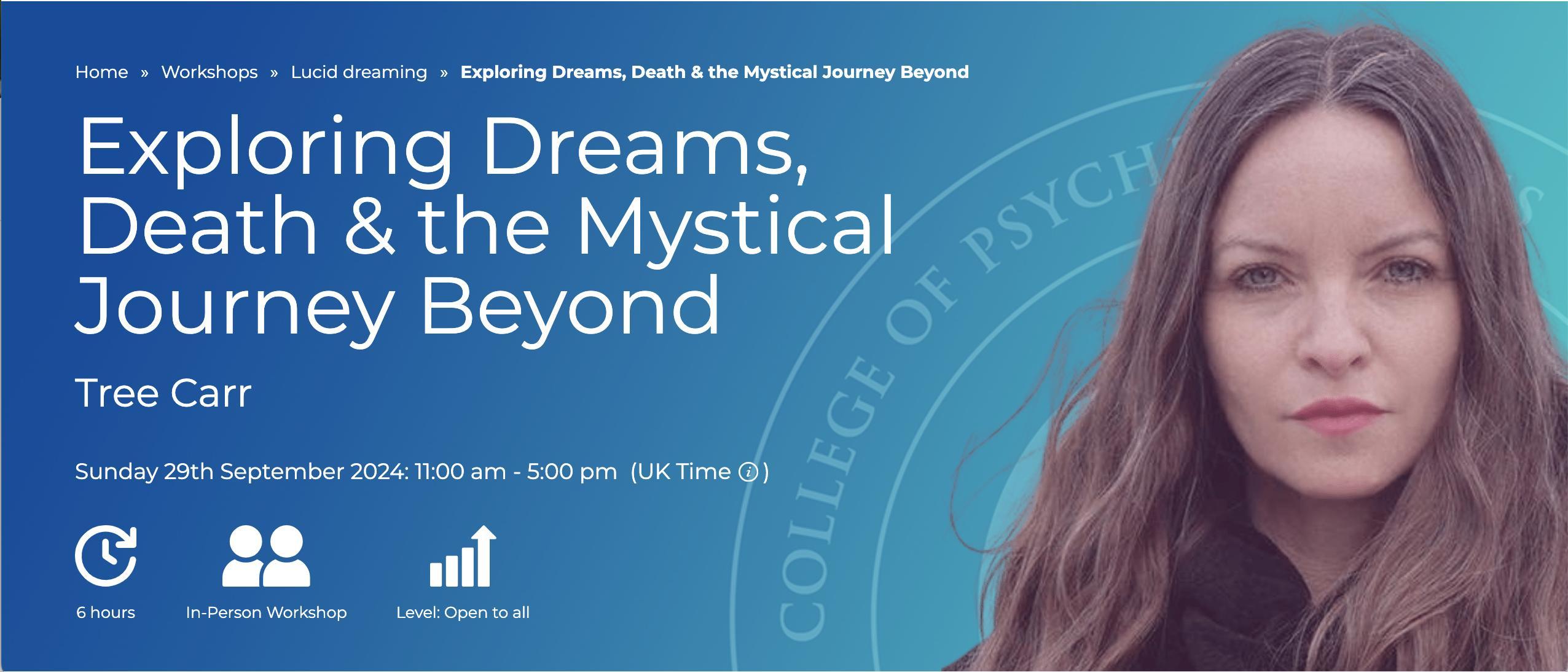
Psychopomps in mythology & folklore
The concept of the psychopomp is as old as time, and transcends cultures both ancient and modern. We may not connect so easily with the idea of Ancient Egypt's Anubis meeting us at our death with a scale and feather. However, many of us are familiar with accounts from those who have survived Near-Death Experiences (NDEs) describing a loved one - a departed parent, partner, sibling or even pet - coming to meet them and guide them into the great beyond. So while the word 'psychopomp' might be unfamiliar or new to us, the idea of it is deeply engrained in our collective psyche.
Celebrated psychopomps:
Ancient Greek mythology: Hermes one of the most well-known psychopomps in ancient Greek mythology. The son of Zeus and Maia, Hermes is often depicted as young and athletic, wears a winged helmet and carries a caduceus (a winged staff with two serpents intertwined). He wears multiple feathers in his cap (excuse the pun 😊) as the messenger of the gods, as well as the god of trade, thieves, travellers and Olympic athletes. In his role as psychopomp, Hermes is a guide to the Underworld, leading souls there once they have departed the earthly realm.
Ancient Egyptian mythology: Anubis is a familiar and mysterious figure to all who are fascinated by the Ancient Egyptian pantheon. The jackal-headed god oversees funerary rites, mummification and the soul's transition to the afterlife. Anubis oversees the weighing of the heart ceremony, where the heart of the deceased is weighed against the feather of Ma'at, the goddess of truth and justice. If the heart was found to be lighter than the feather, it meant that the deceased had lived a virtuous life and could proceed to the afterlife. If the heart was heavier, it indicated a life filled with wrongdoing, and the soul would face punishment.
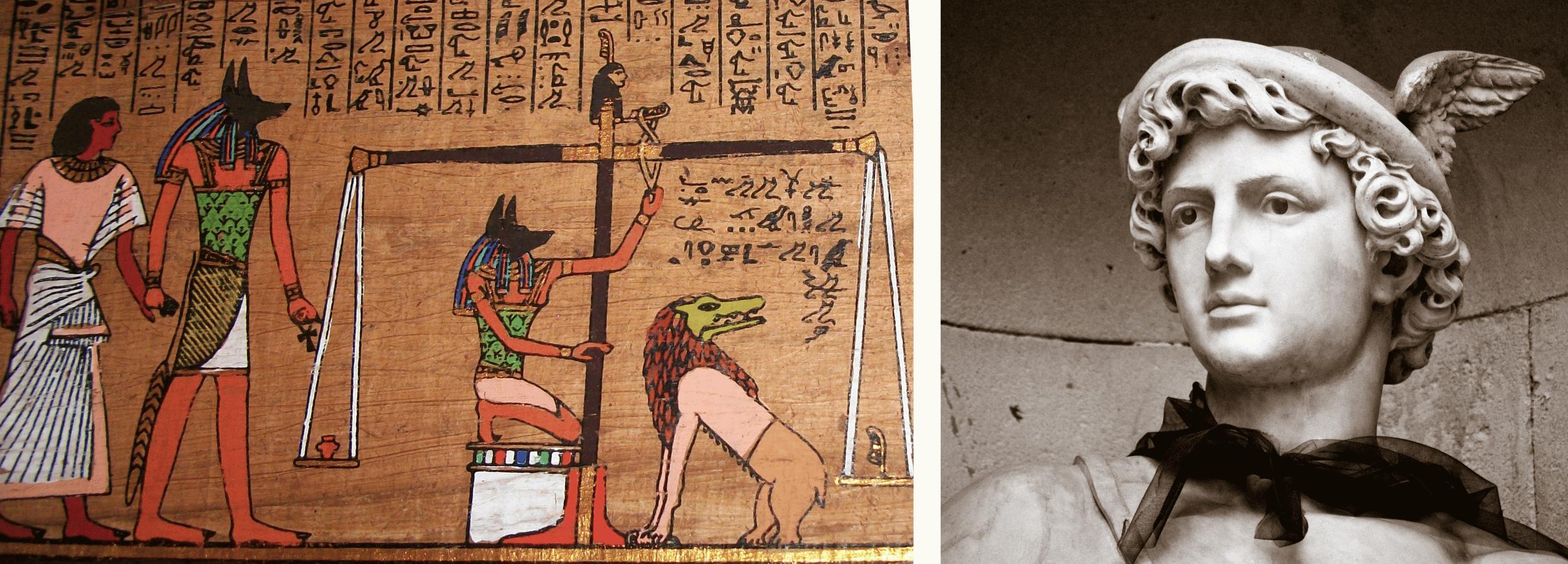
Norse mythology: The Valkyries are powerful, noble warrior women who serve Odin, chief god of the Norse pantheon. The word 'Valkyrie' comes from Old Norse valkyrja, which means 'chooser of the slain.' Valkyries ride through the skies on horseback, selecting warriors who have died in battle to be taken to Valhalla, Odin's great hall in Asgard. Some of the most famous Valkyries in Norse mythology include Brunhild, Brynhild, and Sigrdrífa.
Celtic mythology: The Morrígan is a complex and multifaceted goddess who presides over war, prophecy and fate. She is a shapeshifter who appears to us as a crow or raven, or as a trio of sisters: Badb, Macha, and Nemain or Anand. This trio has lead to The Morrígan's conflation with the triple goddess. The Morrígan foretells the outcomes of battles and the fates of individuals. If the fate is death, it is the Morrígan who will lead the soul to the next world.
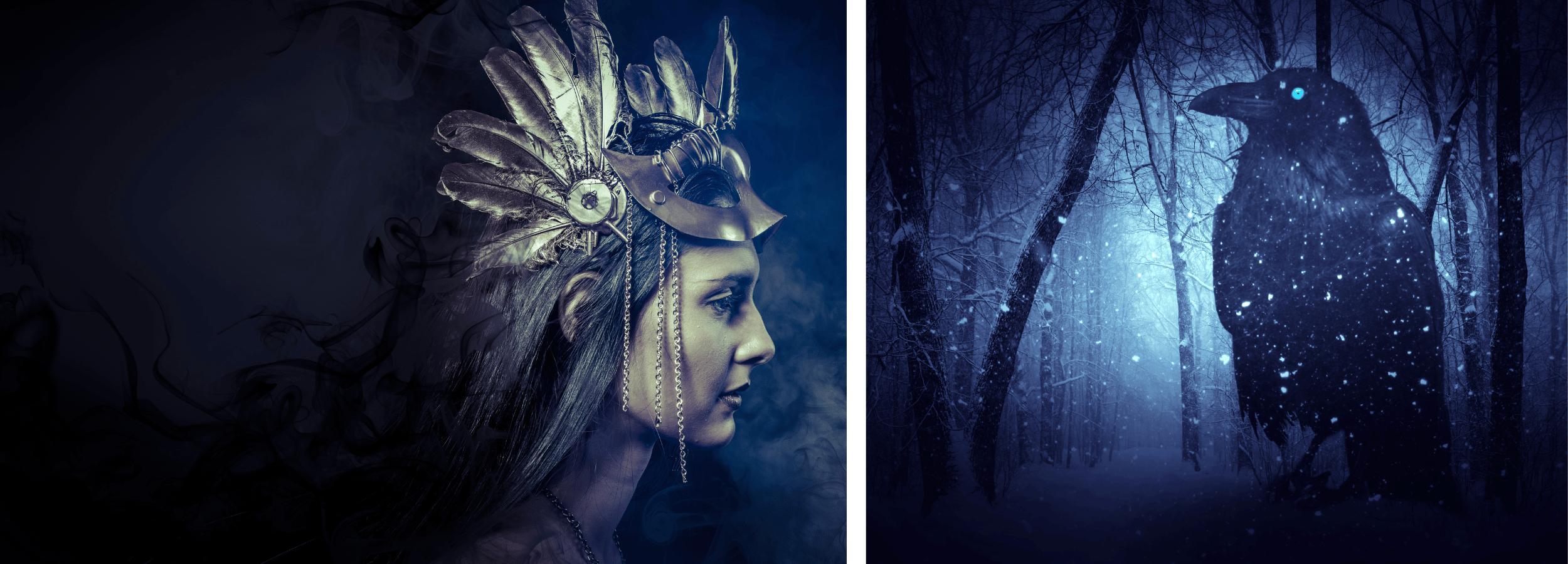
Japanese mythology: Shinigami are the psychopomps of Japanese mythology, and if you are a fan of the anime Death Note, you'll remember the series' shinigami Ryuk and his death notebook. The term 'shinigami' translates to 'death god' or 'death spirit'. Shinigami are cesponsible for guiding souls to the afterlife and presiding over the process of death. These psychopomps can have different appearances and roles; sometimes as skeletal figures, other times ghostly beings, or even human-like entities. Some stories portray them as neutral arbiters of death, while others depict them as malevolent.
Shamanic cultures: Psychopomps feature strongly in shamanic belief systems, with spirits or animals serving as psychopomps to lead the deceased souls to the land of the dead. In some Native American traditions, the owl is seen as a psychopomp.
Your own psychopomp
When our own time comes to pass beyond the veil, who will we meet? Who will our own psychopomp be? Will we be greeted by a passed partner, parent or pet? Or perhaps one of the psychopomps from popular mythology listed above... well, we shall have to wait and see.
Join our newsletter to stay connected with The College of Psychic Studies.


